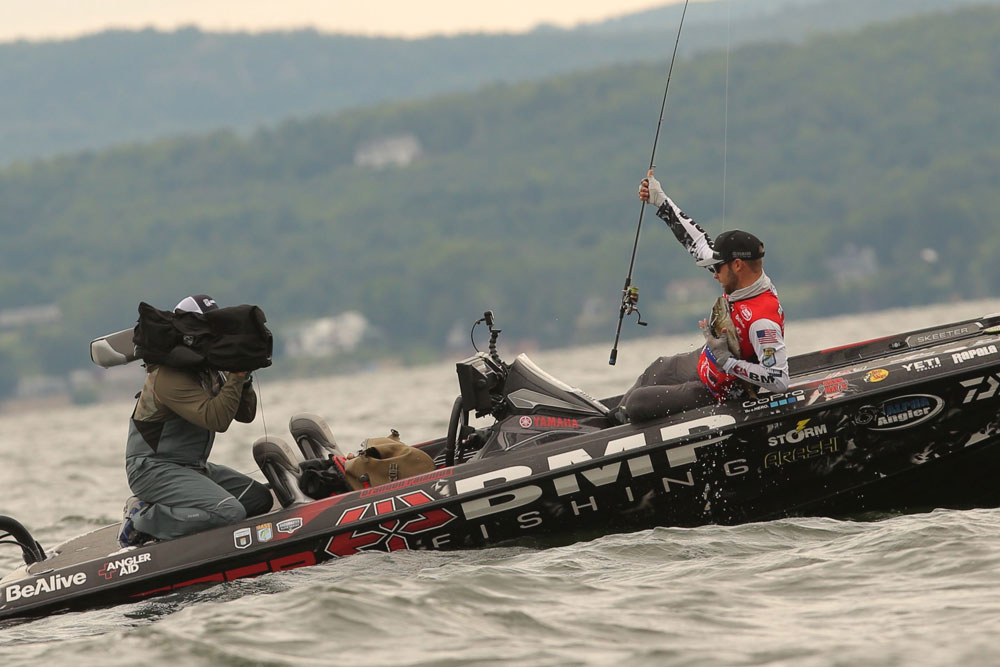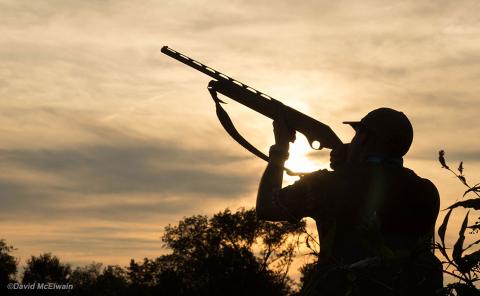Thirty-three-year-old Mossy Oak Fishing Team member Brandon Palaniuk of Hayden, Idaho, has been a bass pro for 9 years and the Angler of the Year and has earned $1.3 million fishing. To learn more about Brandon Palaniuk, visit his Facebook page.

The anglers of the Bassmaster Elite Series were fishing on Lake Champlain out of Plattsburgh, New York, the last week in July, 2020, and the first weekend in August. I spent most of my time fishing on the inland sea portion (Vermont side) of the lake because I felt the bass might be healthier there. I used spinning tackle and a drop shot rig, knowing that this particular area had a history of holding plenty of baitfish at this time of the year. Even though I had fished this lake many times before, I still kept an open mind and tried not to fish in the same places where I’d caught bass in past years. I kept tabs on the water and weather conditions each day to determine where the smallmouth might be.
A healthy population of smallmouths lived where I was fishing, and I was pretty sure that I could win the tournament with them. During the first two days of practice, I caught two smallmouths just to verify what size they were. By the end of practice, I was just idling around with my Humminbird Solix 12 depth finders https://www.humminbird.com/ and dropping GPS pins in areas where I could catch fish during the tournament. Something I liked about these units was the clarity of the image that it grabbed and the mapping feature with the LakeMaster charts. The combo of those two features allowed me to really dial-in the pattern that helped me win.
I like to have four depth finders: two Humminbird Solix 12s up front on the casting deck and two of the same ones on the console of my boat. I have a mapping screen and 2D sonar on the depth finder on the left side of my console and a Mega side/down imaging screen on the right side. This way, I have the best views to find structure, see the fish and know exactly where they are on the lake. I use my 2D sonar when I’m driving my boat on plane and do the same thing when I’m idling, except I also use the side scan to get a closer look at the underwater structure and fish. Another thing that I like to do is split the screen on each of my depth finders to give me two different views of where I’m fishing. If I want to, I also can split the screen into four sections, but I generally don’t since the images aren’t as clear.
When I move to the casting deck on the front of the boat, I have one depth finder set on Mega 360 imaging, one of the most important features that allows me to see the bottom, the surface and everything between all the way around the boat. That unit also has my mapping screen: an application that allows me to see all the waypoints I’ve marked during practice. Since I was fishing in deep water (20-40 feet deep), I was holding the boat right on top of the smallmouths and fishing vertically.
Depth finders have become so critical that I honestly can say that I would not have won this tournament without them. My electronics not only let me see the bass holding on the boulders and rocks of these deepwater flats but also helped me determine the size of the bass I was seeing. The width of the arches told me how big the fish were, and the length showed me how long the bass were in the sonar cone. In other words, the thickness of the arch determined the size of the fish.






























